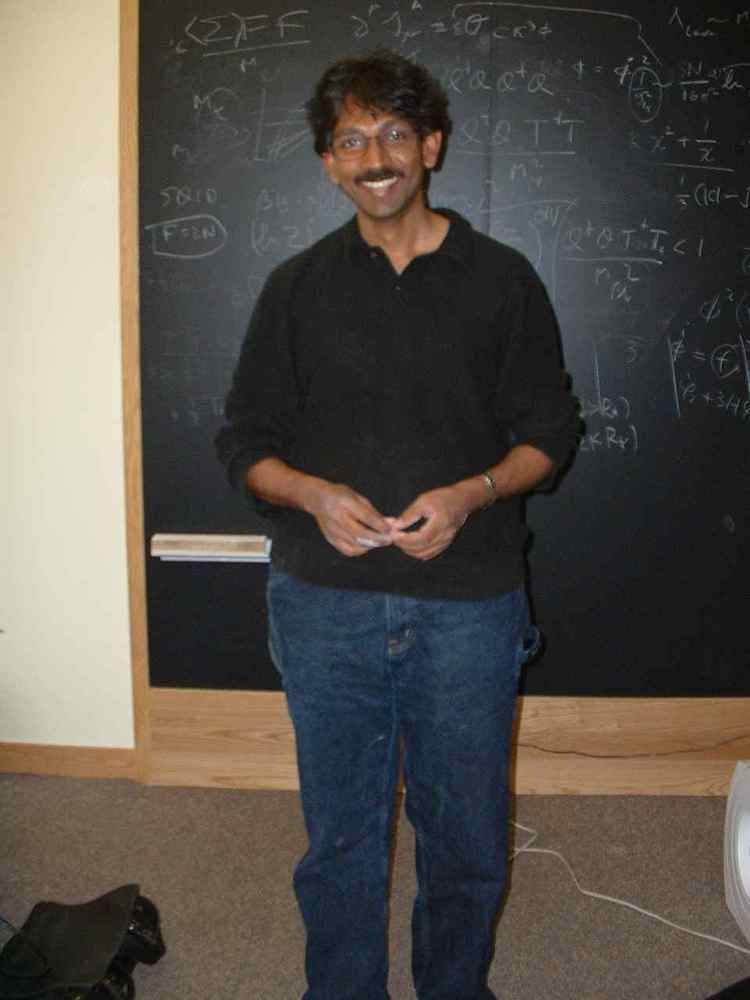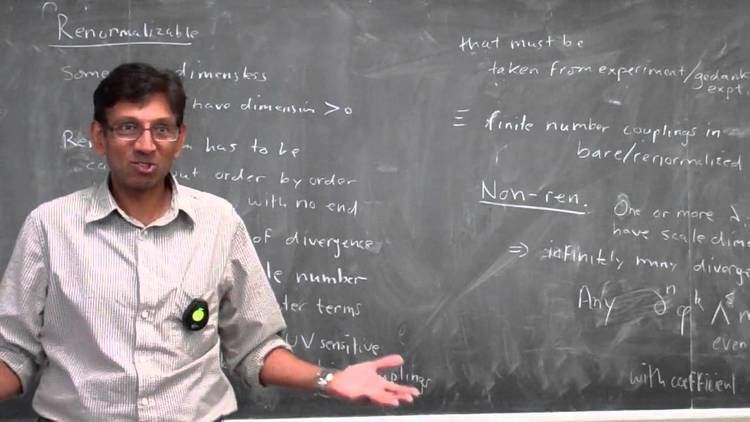Residence United States Role Physicist Name Raman Sundrum | Nationality American Fields Physics | |
 | ||
Institutions Johns Hopkins UniversityStanford UniversityBoston UniversityHarvard UniversityUniversity of California, BerkeleyUniversity of Maryland Alma mater University of SydneyYale University Education | ||
Raman sundrum btz black holes and cft
Raman Sundrum (born 1964) is an Indian-American theoretical particle physicist. His most famous contribution to the field is a class of models called the Randall–Sundrum models, first published in 1999 with Lisa Randall. He is a Distinguished University Professor at the University of Maryland and the director of Maryland Center for Fundamental Physics.
Contents
- Raman sundrum btz black holes and cft
- PSW 2403 Differentiation of the Embryonic Universe Raman Sundrum
- Biography
- References

PSW 2403 Differentiation of the Embryonic Universe | Raman Sundrum
Biography
Raman Sundrum did his undergraduate studies at University of Sydney in Australia and received his Ph.D. from Yale University in 1990. He was one of two Alumni Centennial Professors in the Department of Physics and Astronomy of the Johns Hopkins University. In 2010, he left the Johns Hopkins and moved to the University of Maryland. His research is in theoretical particle physics and focuses on theoretical mechanisms and observable implications of extra spacetime dimensions, supersymmetry, and strongly coupled dynamics.
According to Scientific American.com, he was considering leaving Physics for Finance, when he called the now famous author and collaborator Lisa Randall to propose working together on membranes, or "branes" as they are known. Branes are domains or swaths of several spatial dimensions within a higher-dimensional space. The fruits of that collaboration were papers known as RS-1 and RS-2, two of the most cited in physics for the past ten years.
